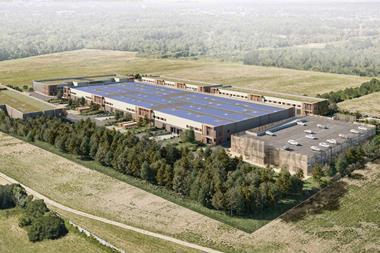IRELAND - The National Pension Reserve Fund (NPRF) has reaffirmed its desire to invest at least €200m in domestic public sector infrastructure projects, particularly as there is likely to be ashortage of assets for these projects going forward.
At a meeting of the Irish Public Accounts Committee,Dr Michael Somers, chief executive of the National Treasury ManagementAgency (NTMA), told members "we are very conscious of the fact thatvery little of this fund has been invested in Ireland".
He claimed the NPRFhas been "constantly trying to find projects" as it originallyallocated €200m of the €20bn pension fund to be used towardsinfrastructural projects in Ireland, but claimed "up to now there hasbeen no shortage of assets to build projects. Money has been freelyavailable but that is going to change".
Somers highlightedprevious failed bids - in which the NPRF had been part of a consortium- had attracted negativity because of potential conflicts of interestbetween the NTMA looking for value for money and the NPRF seeking thebest rate of return.
As a result, he pointed out theorganisation has asked that if there is a Public Private Partnership(PPP) contract in the future the NTMA- as manager of the NPRF - should arrange the full funding of theproject, either solely form the NPRF or with a consortium, and thenonly tender the design, build and maintenance.
That said, headmitted the pension fund has also struggled to manage the 3%'Maastricht' limit on public spending, as he claimed if the NPRF buildsan office block the spend rides close to the 3% limit, yet if it buysshares in a company - which then builds the office block - theinvestment doesn't count.
Somers admitted the NTMA has "haddiscussions with various State agencies which would like us to helpthem to build some projects", but said it had asked them to "confrontthis Maastricht issue because we could not do so. It is all to do withthe overall government limit on how much money should be spent".
Asa result he said: "There is €20bn in the fund that we have tried toinvest in Ireland where we can and that while there has not been anissue about finding money until now, there will be one in the future."
PaulCarty, chairman of the NPRF Commission, added the fund currentlyinvests around €590m, or 3% of the fund, in Irish equity and debtsecurities, and a further €60m to a small number of Irish venturecapital firms, subject to their meeting a number of conditions,principally to do with fund size.
He did admit "a particularissue that arises from time to time is investment by the fund in Irishinfrastructure", and added "we would like to invest in Irishinfrastructure and infrastructure forms part of our target assetallocation".
Carty said: "One of the factors that would seem tohave prevented us accessing this market is that until now there doesnot seem to have been any shortage of capital. However, the tighterlending environment which brought about by the credit crunch may leadto more investment opportunities for us. This is an area we areactively looking at."
The debate on the 2006 annual accounts ofthe NPRF meanwhile revealed recent volatility had reduced the value ofthe pension fund from €21.2bn at the end of December 2007 to €20.5bn atthe end of May 2008.
Figures presented by Carty showed while thefund's equity portfolio responded well to "difficult market conditions"in 2007, it left them "vulnerable to the effects of further creditlosses by banks and the crisis spreading beyond the financial sector".
Asa result, while the pension fund reported a loss of -10.5% in the firstquarter of 2008, Carty claimed the fund had benefited from an equitymarket rally in April which had "recouped much of this decline" to showa return of -5.3% in the five months to the end of May.
However,Carty confirmed although the pension fund is expected to grow to €140bnby 2025, it is expected the NPRF will only be able to meet 25-30% ofthe public pension liabilities that will have arisen by that date.
Hesaid "exercises will be done to try to quantify in numerical terms"what the liabilities are within the next 12 months, and confirmed thereview would be a "detailed exercise" looking at issues such as lifeexpectancy, age profile, and birth rate.
And in response toquestions about the asset allocation targets of the fund in the currenteconomic climate, Carty also said the commission is "very cautious",further suggesting meeting the targets for 2009 is a gradual process.
At present, he said, the fund is "holding back" as it is underweight inequities and overweight in cash, with a proportion of about 7%, or€1.4bn of the fund in cash, while the fund's targets for private equityand property investment is 8%, yet indirect property exposure is just3.8%.
He said: "We would slow our investment in that area ifwe thought - as we do - that the opportunities might not be right forus. We are behind our targets in terms of private equity and property.We slow matters down and apply caution."
However commenting onthe effect of the current volatility Carty claimed the fund is "verydiversified to take into consideration the risk that applies, even inthese volatile situations".
"That is why, since our lastmeeting, we have moved to alternative assets. We are looking at privateequity and property for which the returns are likely to be better, aswell as commodities. Diversification is essential in assessing risk,"he added.
If you have any comments you would like to add tothis or any other story, contact Nyree Stewart on + 44 (0)20 7261 4618or email nyree.stewart@ipe.com












